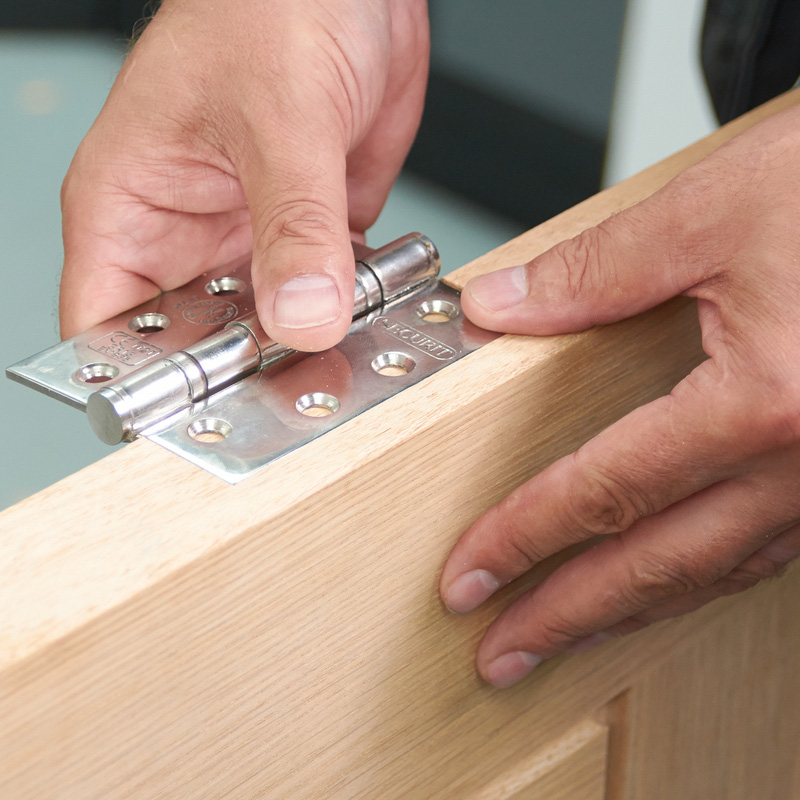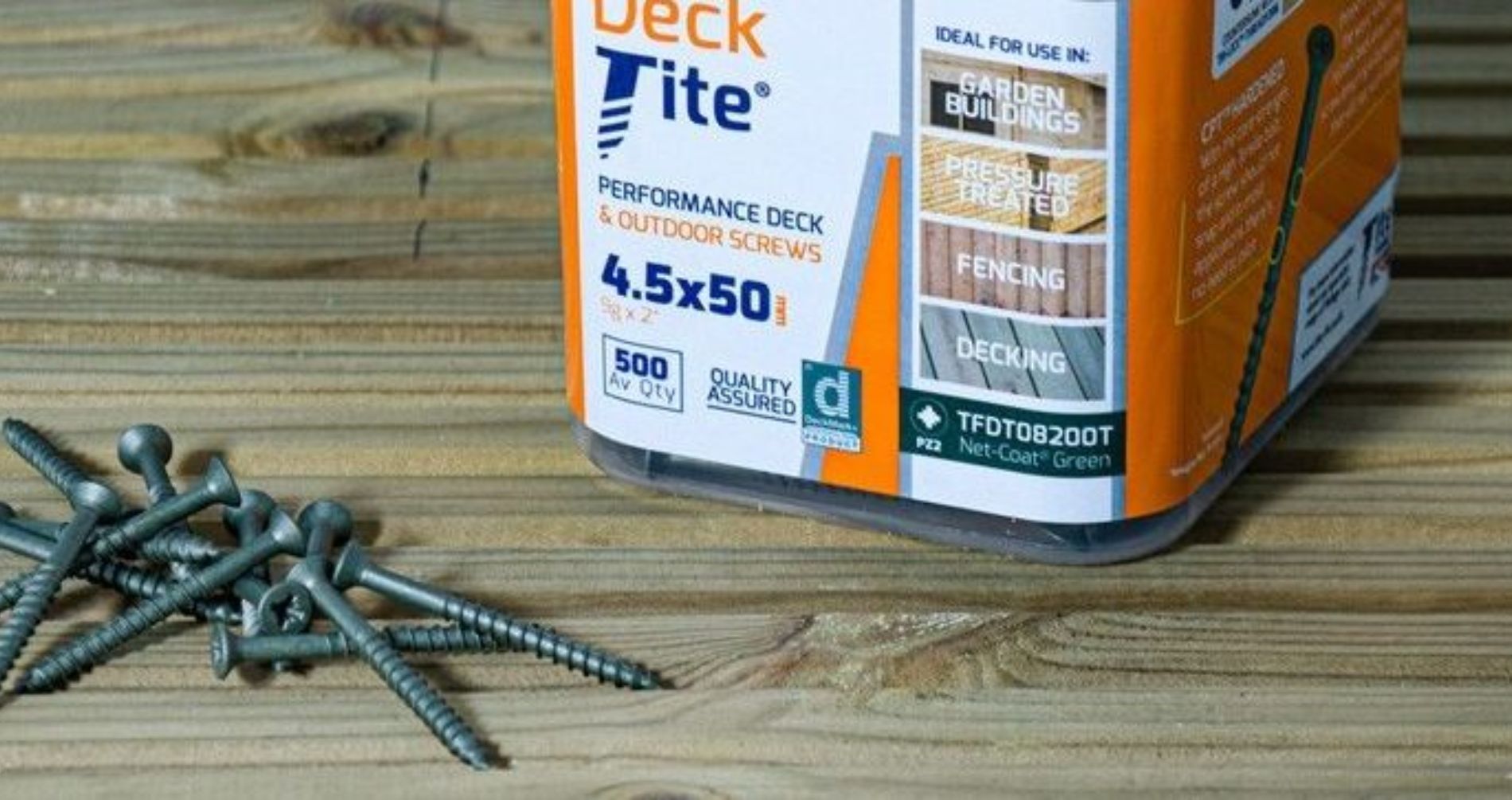Hinges are often a forgotten feature on doors and gates – but they shouldn’t be. When used correctly, they can act as additional protection against intruders in your home and stand up against fire in the event of an emergency.
If you’re looking for a new or replacement hinge for a cabinet, door or gate, there are a number of options and things to think about. First, identify the type of hinge that best suits the use. Secondly, think about the size and mass of the door (including any added weight from door closers).
Finally, consider where the hinge will be used, which can determine whether the hinge needs to be concealed, as well as the material and finish.
Types of Hinges
Understanding the differences between the types of hinges will ensure you choose the right one, for the right door or gate. Tee hinges or hook and band hinges are perfect for gates, whereas cabinet hinges and flush hinges are suited for cupboards and cabinets. If you're looking for a hinge for interior doors, you could opt for a popular butt hinge but if you'd rather have something more heavy-duty choose a sturdy ball bearing hinge. In this guide, we'll take the guess work out of choosing.
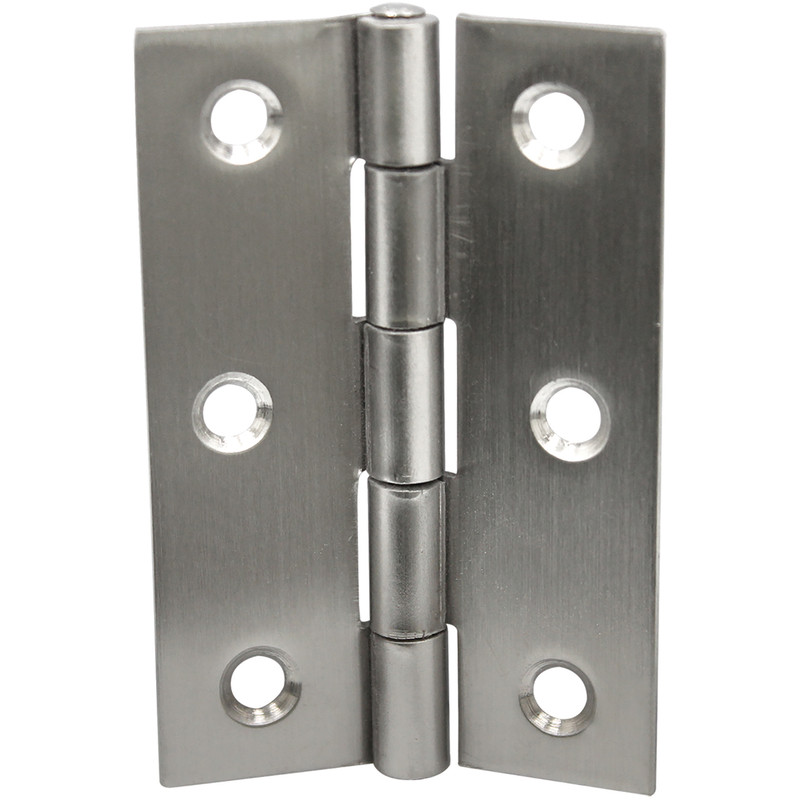
Butt Hinges
Butt hinges are the most common type of hinge, and are used for a range of lightweight interior and exterior doors. This type of hinge has two identical sides, also known as 'leaves': one that gets morticed into the door, and the other secured to the surface of the frame – so the sides of the hinge ‘butt’ up against each other.
These hinges are fairly easy to remove by pulling out the pin out from the centre – ideal if you’re likely to need to remove the door in the future, such as for decorating or getting large items through. Butt hinges offer a flush, neat finish which is highly desirable for sleek home interiors.
Butt hinges aren’t suitable for heavyweight doors such as fire doors or some front doors, as they won’t be able to support the extra weight. They’ll also require cutting a mortice in the door, which can make installation more complex and could damage the door if not done correctly. Butt hinges will need semi-regular cleaning needed to keep them working effectively.
Advantages
-
Versatile
-
Easy to remove
-
Flush, neat finish
Things to Consider
-
Not suitable for heavyweight doors
-
Mortice needs to be cut into the door
-
Some maintenance needed

Ball Bearing Hinges
Ball bearing hinges are a type of butt hinge used in domestic and business environments, with identical leaves that ‘butt up’ against each other when the door is closed. They use ball bearings in the “knuckles'' of the hinge (the parts that hold the two sides together) so they're more reliable.
These hinges reduce the potential for squeaking over time because the ball bearings take pressure off the knuckles. There is also reduced friction – making them more durable than other hinges. Ball bearing hinges are also able to support heavier doors than other hinges as the stress is taken off of the knuckles.
Ball bearing hinges need some maintenance to keep the ball bearings free of dust, dirt and debris – or the hinge may get stiff or start to be noisy. Consider the hinge material, as mild steel and standard stainless steel should only be used indoors, whilst 304 and 316 stainless steel is hardy enough for outside use. Ball bearing hinges often have a higher upfront cost than butt hinges – but they can last longer.
Advantages
-
Reliable performance
-
Reduced noise and friction
-
Durable and strong
Things to Consider
-
Some maintenance needed
-
Some steel types will get damaged when used outside
-
Higher upfront cost than standard butt hinges
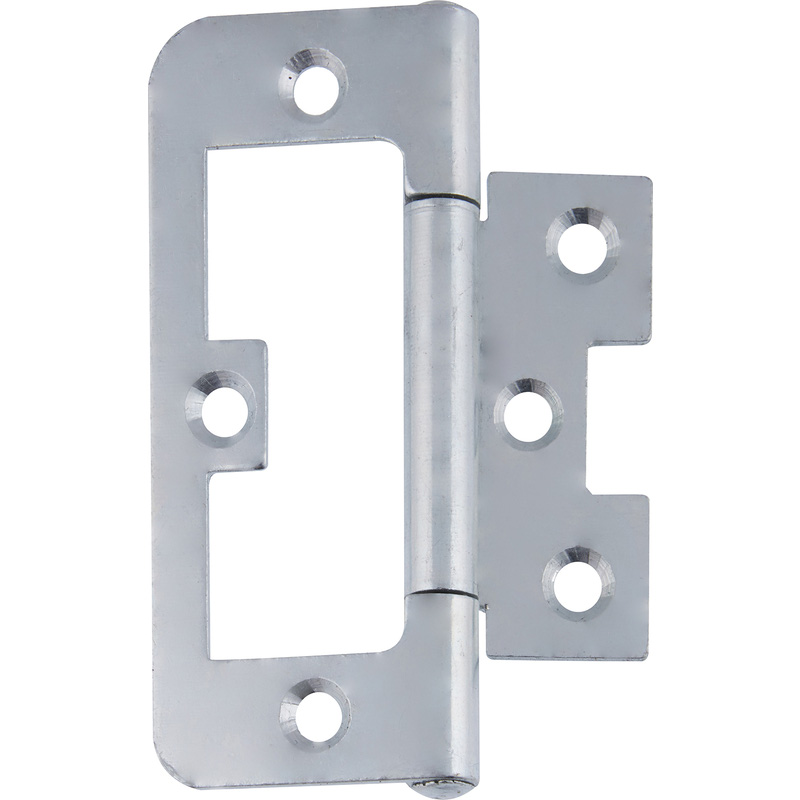
Flush Hinge
A flush hinge is often used for cupboard doors in order to get a flush finish. The two sides of the hinge, the 'leaves', are different – one side fits inside of the other, rather than butting up against each other.
These hinges are hidden when the door is closed, making for a clean finish on cabinets. They’re also easier to install than butt hinges, as they just need screwing into the door - rather than having to cut a recess into the door or the frame. Flush hinges also make for a cost-effective alternative to cabinet hinges.
Flush hinges aren’t suitable for very heavy doors, which is one of the reasons they’re most commonly used for furniture hinges. They’re also less durable than mortice hinges because they’re only installed on the surface. You’ll also find fewer varieties of flush hinges than other types such as butt hinges, particularly in terms of size and structure.
Advantages
-
Achieve a neat finish on cabinets
-
Installed on the surface of the door
-
Cost-effective alternative to cabinet hinges
Things to Consider
-
Not suitable for heavy or external doors
-
Less durable than mortice hinges
-
Limited variations
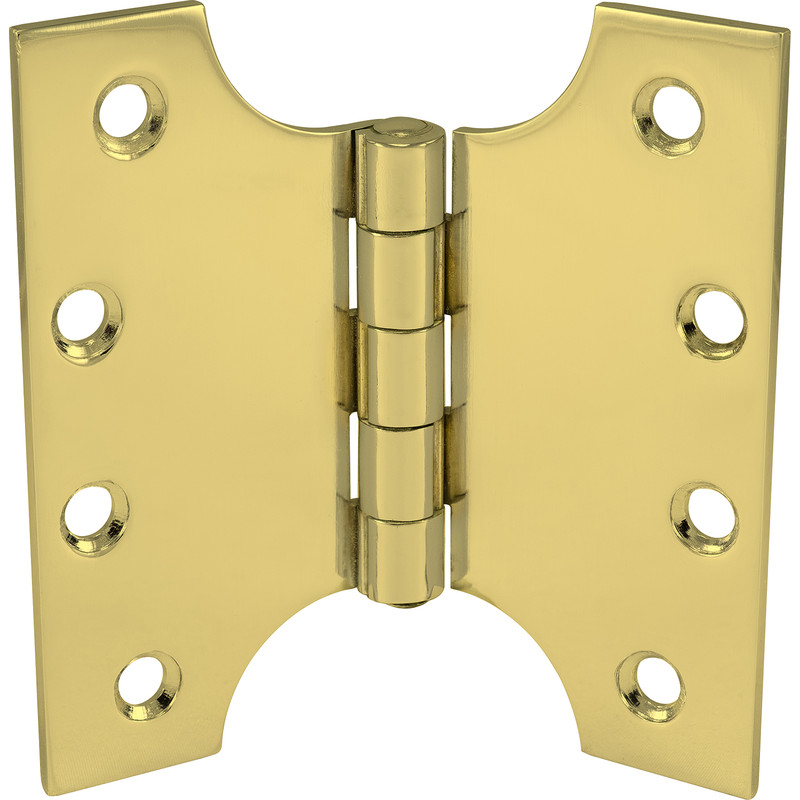
Parliament Hinges
Parliament hinges, also known as projection hinges, have wide leaves which project the door away from the door frame and flat against the wall when opened. They’re suitable for internal residential and commercial doors. You’ll also find graded parliament hinges, which can stand up to fire for between 30 and 60 minutes, depending on their grade.
These hinges can make doors wheelchair accessible by opening up more space around the door. If you have obstacles in the way of your door opening completely, wide leaves can help. When the door opens, the gap between the door and the frame allows it to project over dado rails, downpipes, architraves or window boards, making it an ideal solution.
When doors with parliament hinges are opened, there’ll be a gap between the door and the frame - and when the door is closed part of the hinge will stick out of the back. This can make the appearance of the door appear less seamless and neat.
Advantages
-
Makes doors wheelchair accessible
-
Able to project the door over obstacles
Things to Consider
-
Less concealed than other hinge types
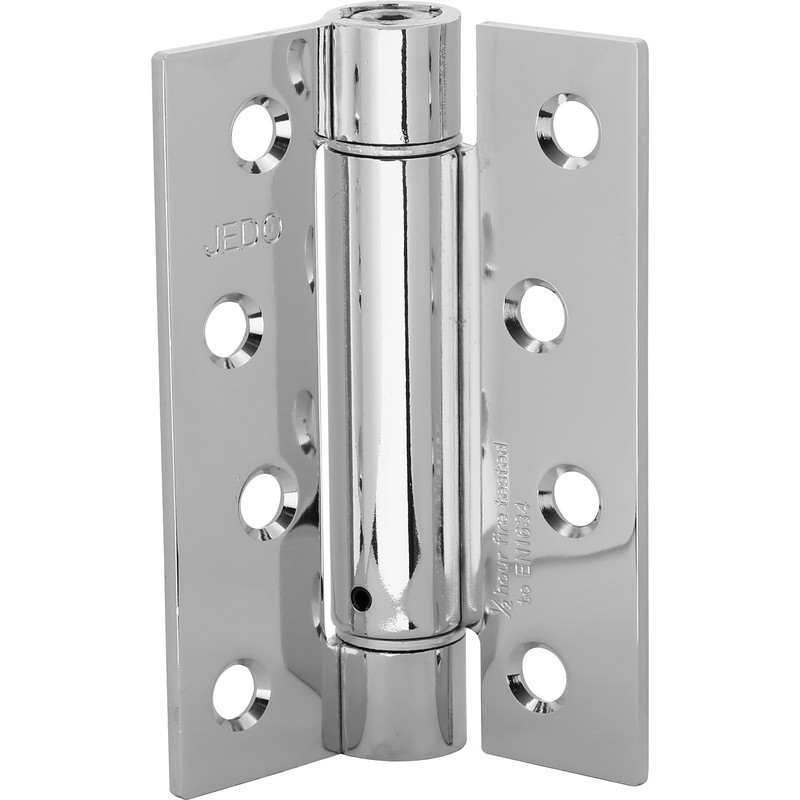
Spring Hinges
Self-closing hinges, also known as spring hinges, close the door behind you with a spring that pulls the door into the frame. They’re suitable for internal doors, unless they have a black polymer coating which makes them suitable for external gates. Many spring hinges will be adjustable so you can control how quickly the door closes so they don't shut too quickly behind you.
They’re used in commercial buildings to control traffic flow and privacy – no need to close the door behind you to protect sensitive information from people walking by. Spring hinges don't require much maintenance, as they won’t attract much dust and debris.
It's important to remember that they can't be kept open without the use of a door stop. This can be inconvenient if you frequently carry items through the door, or if the door is regularly used. You’ll also find spring hinges could become noisy, especially if the tension is too tight and the door closes too quickly. Heavy doors will pull the door shut too fast, so they're better suited to lightweight doors.
Advantages
-
Control traffic flow and privacy
-
Adjustable for greater control
Things to Consider
-
No way of keeping them open on their own
-
Could be noisy, especially if tension is too tight
-
Less suited to heavier doors
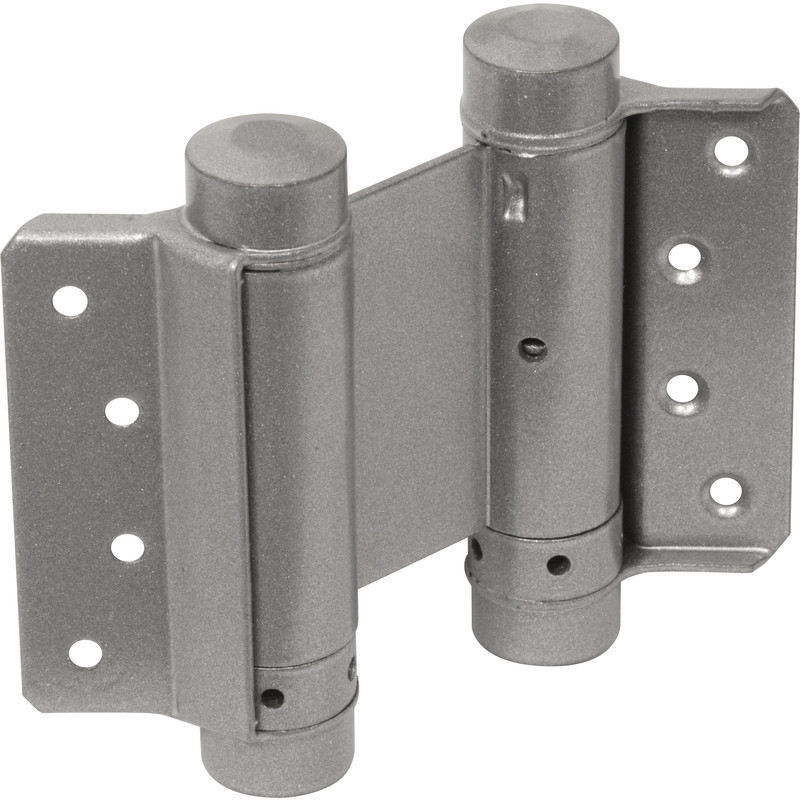
Double Action Spring Hinges
Double-action spring hinges, also known as saloon door hinges, are commonly found on hospital doors, or doors in restaurants or offices. They open in both directions and are fully self-closing. They’re most commonly used inside commercial properties for lightweight doors only.
This type of hinge makes it possible to open the door touch-free – there’s no need for a door pull as they can open in either direction. This can help to limit the spread of bacteria in hospitals and restaurants. You also won’t drop anything you’re holding, and you can get through the door faster in emergencies.
Double-action spring hinges may be noisy when the hinge brings the door back in – which could become a problem in a relaxing restaurant or a hospital ward at night. The hinge is also clearly visible from one side of the door, making for a less seamless appearance. Double-action spring hinges are not tested for fire safety, meaning they’re unsuitable for fire doors.
Advantages
-
Open the door touch-free
-
Ideal for privacy and traffic control
Things to Consider
-
Could be noisy
-
Cannot be easily concealed
-
Not suitable for fire doors
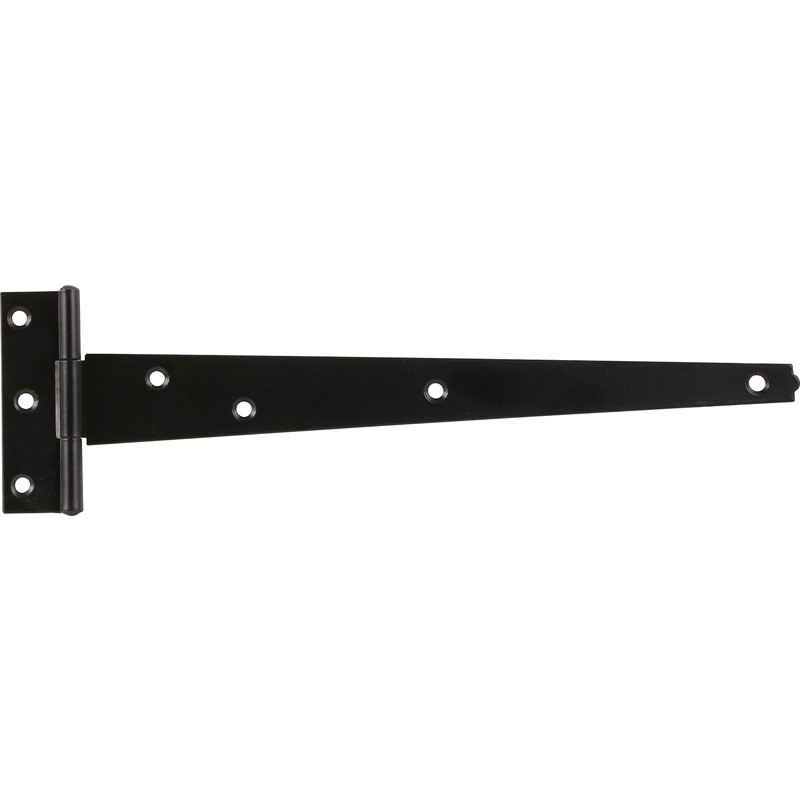
Tee Hinges
A tee hinge consists of a long, narrow leaf that attaches to garden gates and shed doors – or other lightweight exterior doors. They’re designed to evenly distribute weight across the surface of the gate or door to reduce the strain placed on the hinge. These hinges are made from steel and coated for protection against the elements.
Tee hinges come in a range of different styles, finishes, materials and colours which allow you to customise your gate in your style – whether simple and minimalist, or traditional and ornate.
The main consideration with a tee hinge is that they can’t be concealed – they sit directly on the surface of the gate, so you’ll want to choose one in your style! Tee hinges are also only suitable for lightweight doors and gates, and are unsuitable for anything heavy such as wide gates or thick, weighty doors. These hinges are installed on the front of the shed or gate, making them easy to remove – and therefore not suited to security.
Advantages
-
Range of different styles, finishes and colours available
-
Made from steel and coated for added protection against the elements
Things to Consider
-
Hinge cannot be concealed
-
Not suitable for heavy doors or gates
-
Can be removed easily as they’re front-facing, so they’re not built for security

Hook and Band Hinges
Hook and band hinges are large and heavy duty, often used for farm or residential gates. They come in two pieces – the rectangular hinge plate features a hook, and the band attaches to the gate itself. The band sits over the hook to secure it in place. Hook and band hinges need to be a third of the width of the gate, and generally come between 300mm and 600mm.
These hinges are reliable and durable, made for the heaviest gates. Adjustable hook and band hinges can help to level the gate to make it even more secure and functional. Because the hook and band are bolted together, these hinges can be used for security – unlike the similar tee hinge.
For larger gates, you may need to use three or more of these hinges, which can be more expensive than smaller hinges. Hook and band hinges are placed on the front face of the gate in full view, and so their appearance may not be the most aesthetically pleasing.
Advantages
-
Reliable and durable
-
Adjustable options can help you level the gate
-
Two pieces bolted together for security
Things to Consider
-
Heavy gates need multiple hinges
-
Higher upfront cost than other gate hinges
-
Functional rather than attractive appearance
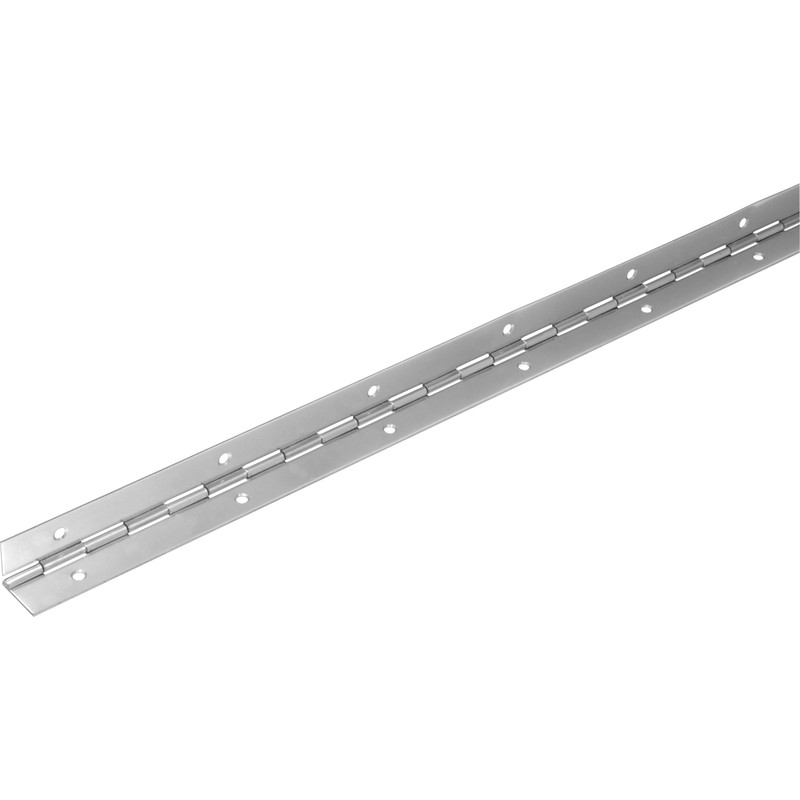
Piano Hinges
Piano hinges, named for their most common use of piano lids and also sometimes referred to as continuous hinges, go along the entire length of the door. They have a central pin and equal leaves on either side, similar to butt hinges. Continuous hinges are often used for heavy doors and lids that need extra support.
These hinges are more stable than other types of hinges because they’re secured along the entire length of the surface and the frame. Piano hinges are perfect for ensuring an equal weight distribution, which can help protect the door or lid from damage.
Piano hinges are only suitable for doors that aren’t too wide or heavy – you’ll need something with larger leaves in these cases. These hinges do not offer adjustability in terms of the height and size of the gap between the door and the frame, which can limit their flexibility during installation.
Advantages
-
Extremely stable
-
Equal weight distribution across the entire surface
-
Ideal for heavy doors and lids
Things to Consider
-
Not suitable for wide doors or gates
-
Hinges aren’t adjustable
-
Not suitable for very heavy doors or gates

Cabinet Hinges
Cabinet hinges allow cabinet doors to open and close smoothly - and are available in inset or overlay styles. Inset hinges are used for cabinet doors that sit inside the frame, whilst overlay hinges are for doors that sit on the outside. They’re most commonly used in kitchen or bathroom cabinets, both commercially and in a domestic setting.
These hinges are available in a range of different sizes and styles to suit any cupboard door. Adjustable cabinet hinges are also available, which allow for level doors, and smooth opening and closing by adjusting gaps between the cabinet and the door.
Cabinet hinges may collect more dirt than other types of hinges because they don’t have a completely flat surface. They’re also more difficult to clean, so they could get grimy in a kitchen if not regularly wiped. You should also consider how much you’ll want to open your cabinet, whether you have an inset or overlay door, and also whether you’ll want a soft-close feature.
Advantages
-
Available in a range of sizes and styles
-
Adjustable options keep the door level and working smoothly
Things to Consider
-
Collect dirt which can stop the hinge working
-
Can be difficult to keep clean
-
Choices to make regarding opening angle and soft-close
Key Hinge Features
Material
You’ll find hinges in a range of materials which each have different qualities. Brass hinges are compact and often found on lightweight interior doors, but aren’t suitable for front doors. Brass is a ductile material, which makes it both moldable and resistant to breaking. It's also resistant to corrosion and provides an attractive, traditional appearance.
Stainless steel hinges, often found on fire doors and external doors, are resistant to extreme temperatures, highly durable, and protected against rust and corrosion. You’ll find some hinges referred to as 304 or 316 stainless steel, which are suitable for external use. Cast iron hinges are strong and have high corrosion and friction resistance, and also provide a traditional look.
Finish
Finishes affect the appearance and qualities of a hinge. Polished and chrome hinges have a smooth, shiny appearance and are used for internal doors that don’t need extra protection from the elements. Satin hinges are also used, but have a brushed appearance and do not show marks easily – making them ideal if the hinge is more visible.
You’ll also find electro, zinc, and nickel plated options. Electroplating increases hardness and creates a protective barrier on the hinge, while zinc plating offers long-lasting protection from the elements and reduces the risk of corrosion and rust. Nickel plating can reduce the effects of friction, ideal if the hinge will be regularly used.
Size
The size of hinge you’ll need depends on the weight and width of the door or gate. Heavier, wider doors need heavy-duty hinges. Standard residential interior doors need hinges that are about 75mm long. Most fire door hinges will be around 100mm long.
Most hinges will come in a pack of two, and using them together will make them suitable for the weight specified in the product description.
Fire Rated
Fire door hinges must be CE marked along with a Certifire identification stamp, and each fire door will need at least 3 fire door hinges.
Many fire door hinges are Grade 13 stainless steel which will stand up to fire for 60 minutes – non-graded alternatives will melt and warp or break. You’ll also find lower price Grade 7 options, which will be fire-safe for 30 minutes.
Hinge Stampings & Marks
You’ll find various markings and stamps on hinges, including a grade, a fire certification, a UKCA stamp, and a CE stamp.
The hinge grade indicates the properties, such as the maximum weight the hinge can handle. A fire certification, or certifire, will be found on hinges that are fire safe. Hinges without fire certification could melt or warp in the event of a fire.
UKCA and CE markings indicate that the hinge has reached the market standards and product regulations for the UK and European markets.

